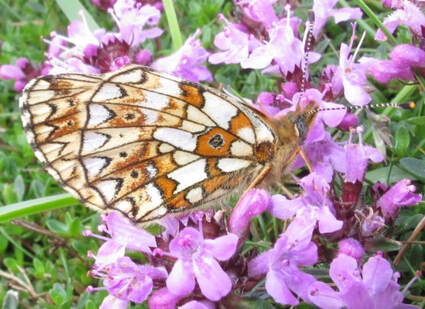 Underwings, Small Pearl-bordered Fritillary 7 July 2012
Underwings, Small Pearl-bordered Fritillary 7 July 2012 Rain, rain, rain, flash floods, rivers on flood alert. Relentless rain through April, June and late into July. The jet stream was locked too far south, again. After overnight rain, vegetation was lush. The morning was humid and warm, an al fresco sauna fragrant with herbs. Shadow-wings flickered about my shadow in an hour of bright sun. Before raindrops evaporated, flowers and grasses were astir with micro-moths. Fritillaries were everywhere, foraging for nectar and pollen, in courtship flight, mating and egg-laying.
In their short lives, six spot burnets seem to spend hours mating. A day-flying moth, their flight is a rapid whirring of wings. Black and scarlet wings spell danger and warn-off birds: a shot of histamines for meddling, anticyanins for a serious assault. Caught in the light, the scarlet hind-wing shadows veins that seem drenched with blood. Clubbed antennae are steel blue and segmented and the moth has black hairs on head and abdomen. In this burnet stronghold they were everywhere – no need to hide with those toxins.
From Wings Over Scout Scar, Cumbrian Contrasts copyright
Whilst writing that chapter Wings Over Scout Scar I was studying crypsis, camouflage, and ways in which butterflies use it as a defence against predators. I came upon this Small Pearl-bordered Fritillary when it was at rest for some while on flowering thyme on an anthill. The image shows the underwing well. It's opaque because sunlight was not strong.
My underwing sequence from June 2020 shows the butterfly with its wings transfused by strong sunlight, which is aesthetically pleasing but it doesn't show the pattern so clearly.
Martin Tordoff surveys a transect on Helsington Barrows, counting butterflies and moths over 15 seasons. His is a different discipline from mine as nature writer and photographer. He reports ' as with most species the, numbers of SPBF have fallen steadily over the years, yet with no apparent degradation of the habitat. Pearl-bordered and High Brown Fritillaries both appear to have been lost on the site in the past few years, though I live in hope, and in any case there are many pockets of this large site I don't regularly explore.’
I walked round the transect on Monday 1 June 2020 , and recorded only seven SPBFs, a fairly typical result nowadays'
His conclusion of loss of numbers, loss of species accords with my impression and the photographic evidence of my archive.
Thanks to Martin for this information.
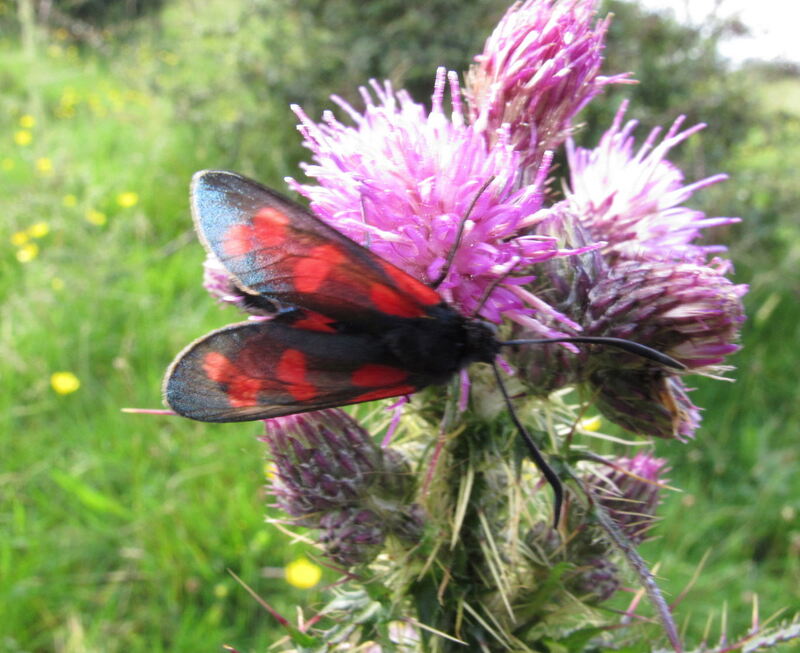
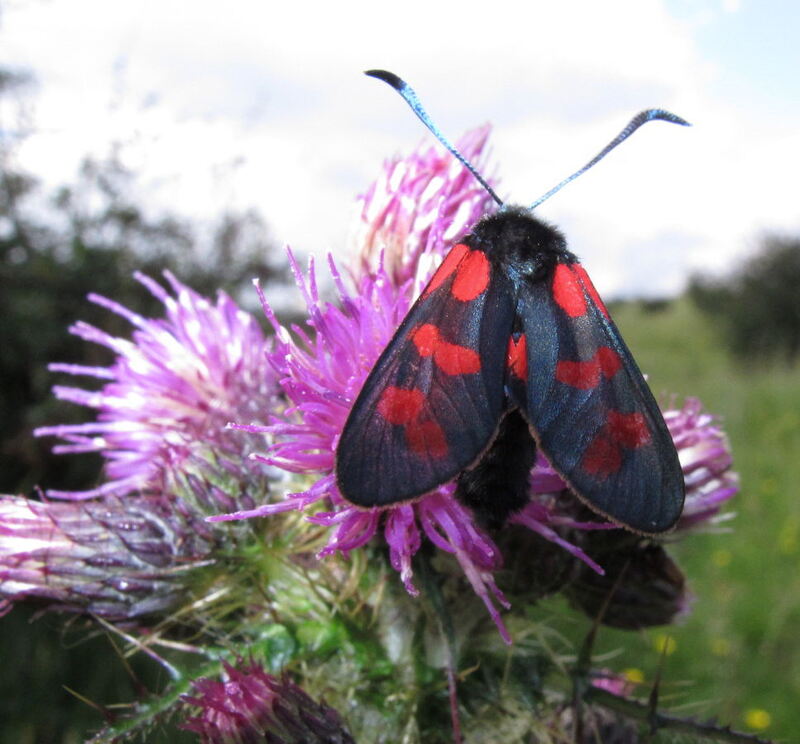
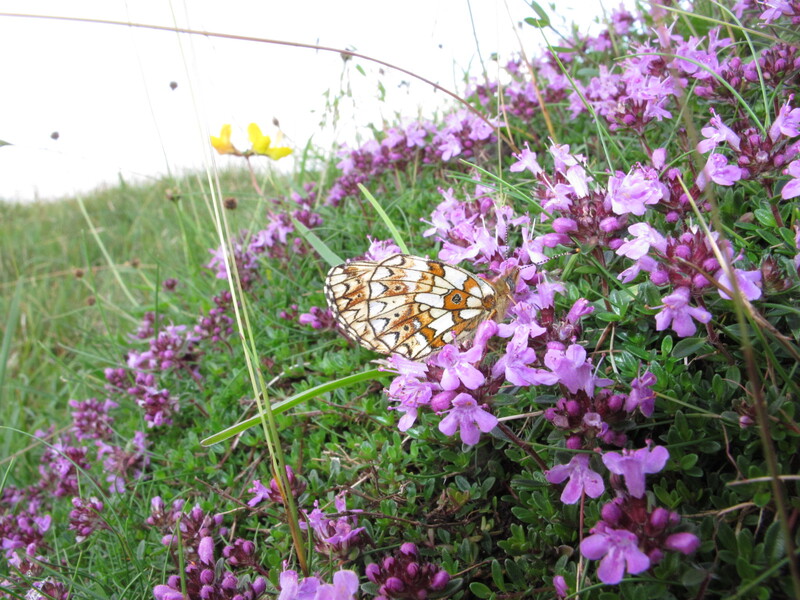
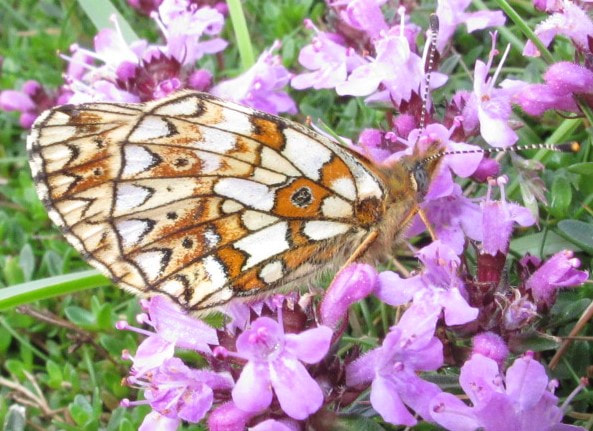
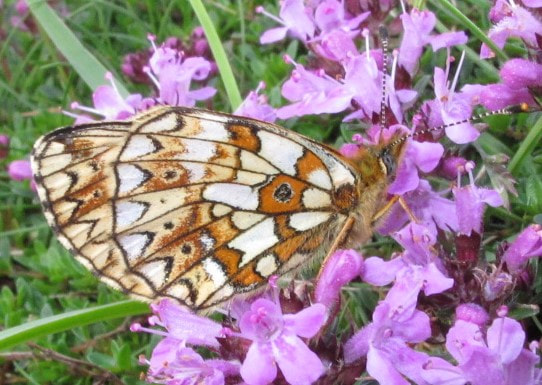
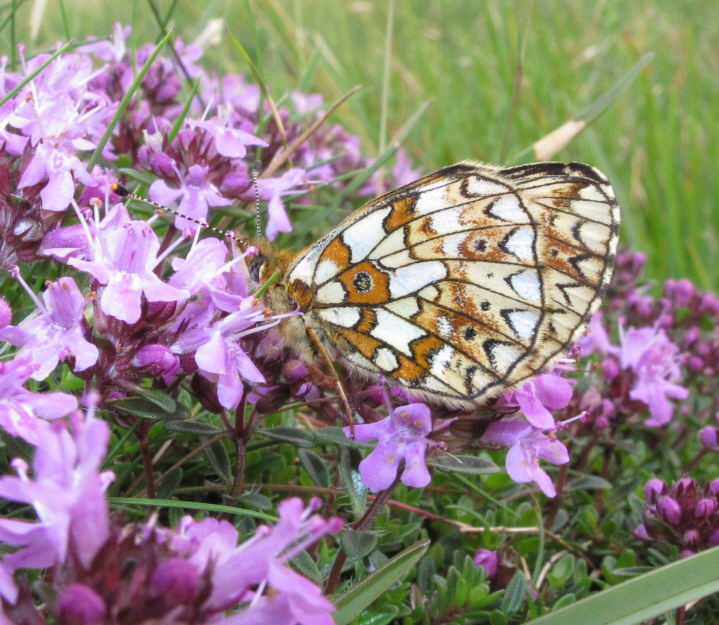
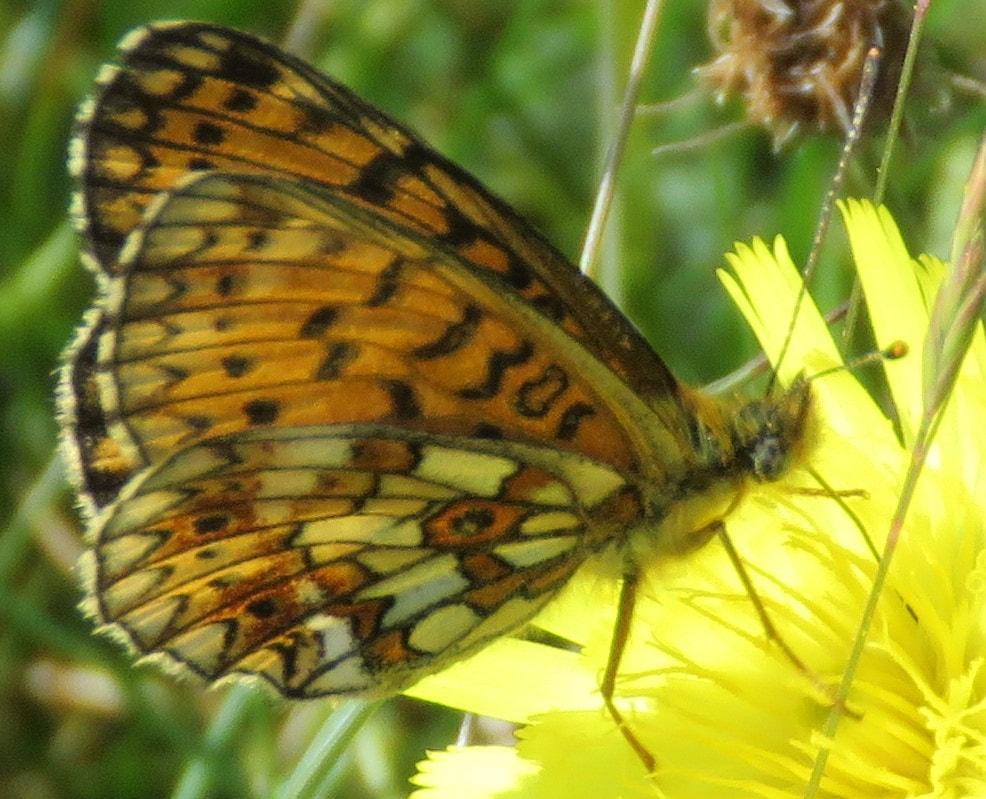
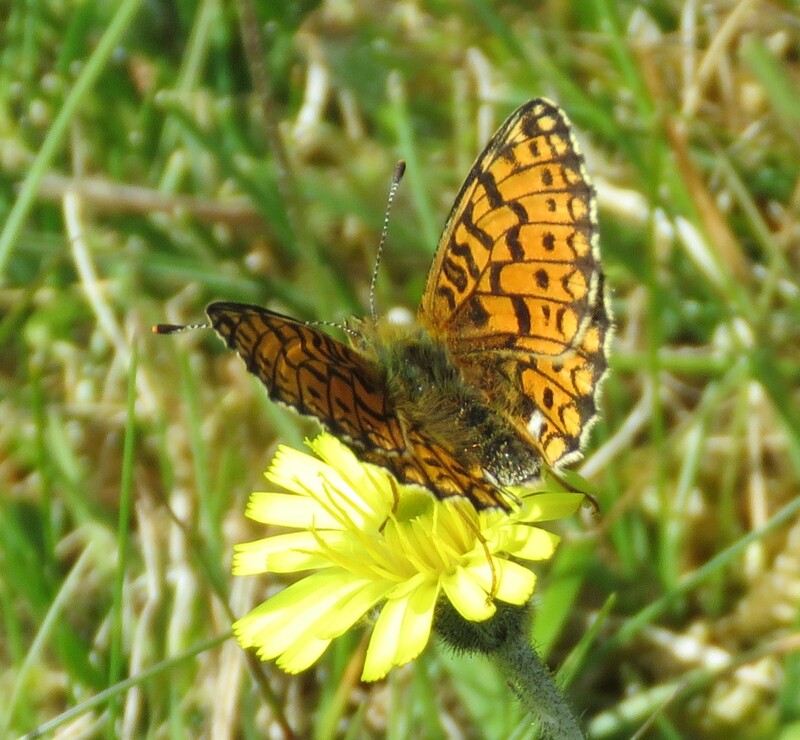
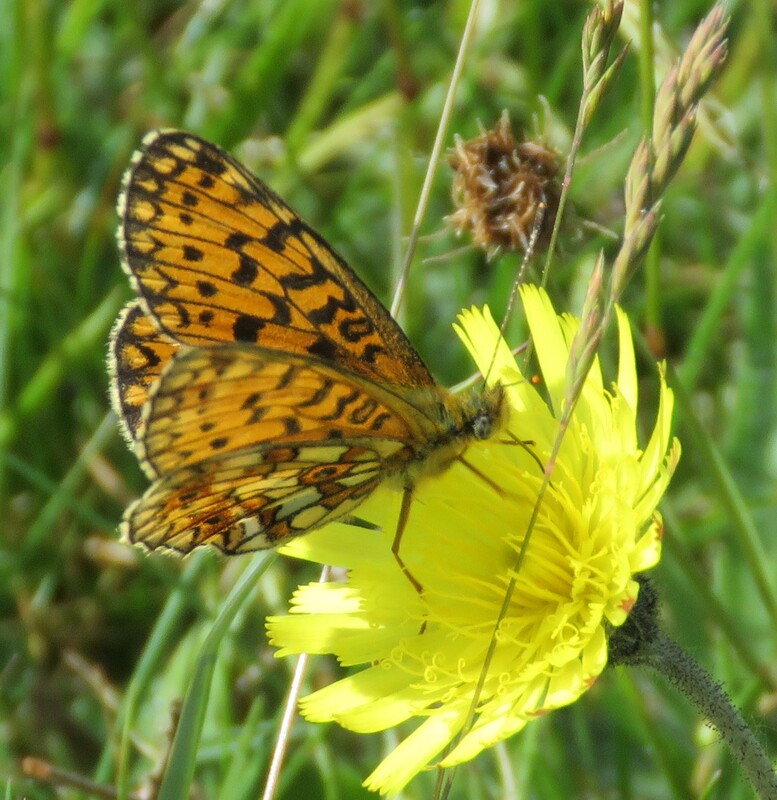
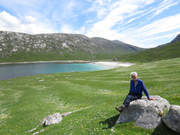
 RSS Feed
RSS Feed